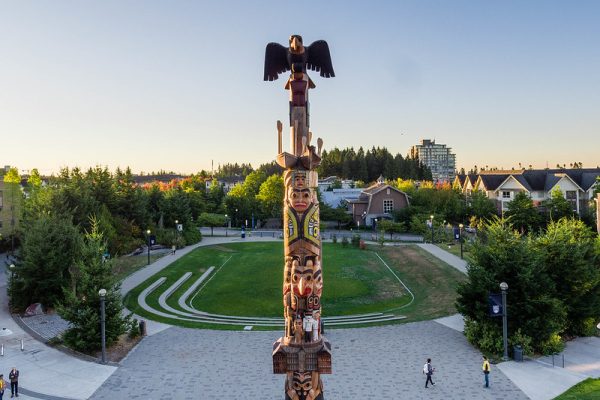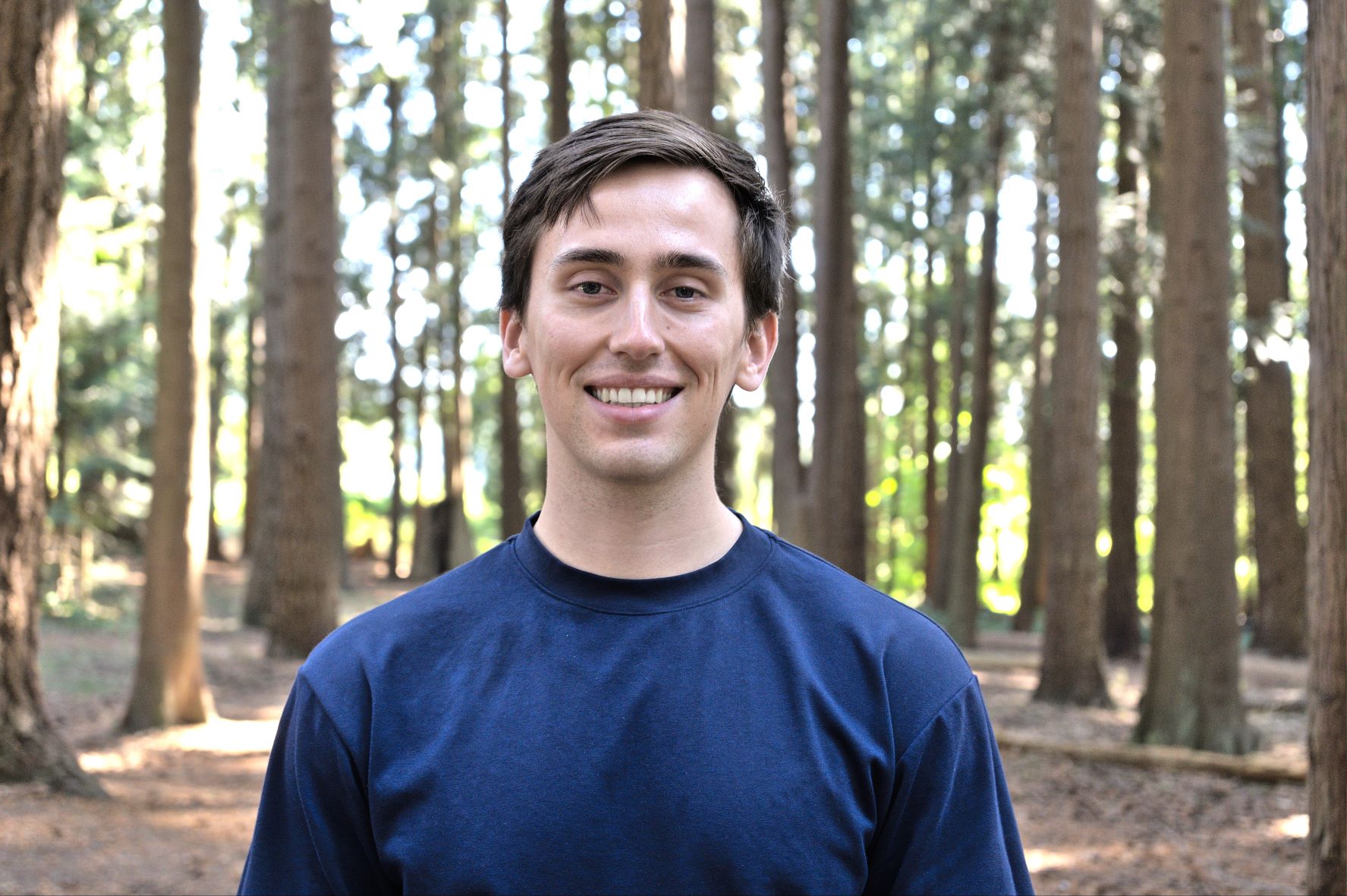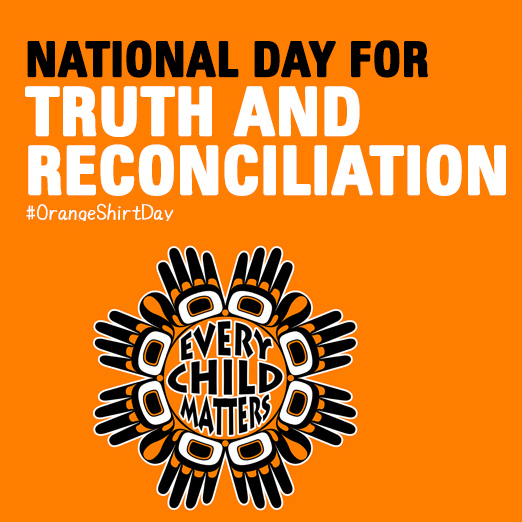
Spotlight on James Shaw: A voice from the Indigenous computer science community
UBC Computer Science student James Shaw, and member of Batchewana First Nation, is actively engaged in helping to make computer science more accessible to Indigenous peoples. James recently sat down with the department to talk about his involvement.

CS: What is your academic status and do you belong to any clubs or organizations?
James: I’m enrolled in the Bachelor of Computer Science second degree program and this is my final term. I am currently the President of the Bachelor of Computer Science Student Association here at UBC. I also have a degree in Materials Engineering, and I am a member of the UBC Chapter of the American Indian Science and Engineering Society.
CS: Tell us a little bit about your heritage.
James: My grandmother is Anishinaabe and was born and raised in Neyaashiinigmiing, or Cape Croker Reserve. It’s in southern Ontario on the Georgian Bay. She moved off the reserve, so my mother and eventually were raised in a typical Western suburb. Growing up though, I connected with my culture by visiting relatives, attending powwows and learning about traditional dancing, drumming and teachings. My mother’s paternal heritage is Quebecois and I speak French.
CS: How have you stayed connected to your heritage since coming to UBC?
James: Actually, coming to UBC was a great way to learn more about other Canadian Indigenous traditions. I say this because there are hundreds of distinct Indigenous groups across Canada. I got involved with a UBC non-profit group called Geering Up, where I worked to help build better connections with the rural Indigenous communities of Northern British Columbia. For example, I created a lesson plan with an Elder that teaches the material properties of density through the processing of T’lina, which is an oil from a BC fish called the Eulachon. I also mentor younger Indigenous students, helping them to understand how their education in STEM can embrace culture.
CS: How does traditional Indigenous activity take place in computer science?
James: It’s more limited than in other STEM disciplines. That turned out to be one of the greatest challenges when we developed a learning resource called ‘Decolonizing the Engineering Curriculum,’ for UBC Applied Sciences (which includes computer engineering). In mining and geological engineering, one can find ways to consult with the Indigenous people living on the land being developed, but when are Indigenous people consulted about developing a social media ranking algorithm, for example? The reality is that Indigenous people are vastly underrepresented in Computer Science, with only 2.2% of the tech workforce in Canada being Indigenous. It makes it more difficult to find each other and work at improvements.
CS: How do you think this gap can be bridged?
James: Learning and sharing information is big. I have reached out to Indigenous Software Engineers and Data Scientists to find out how they make an impact. There are people doing great things, like Tracy Monteith (Cherokee), Software Engineer at Microsoft who spearheaded the inclusion of the Cherokee Syllabary in Microsoft Windows and Office. Others, like Jordan Skye Paul, Head of Global Outsourcing at Pinterest, (Lakota, Hopi, Mohave) have worked with Software Engineers to hide culturally insensitive results from Pinterest's search functionality. It's up to post-secondary institutions, industry and government to put policies in place that make computer science accessible to Indigenous peoples. UBC’s Faculty of Science and CS department have an amazing opportunity ahead to change the landscape here, by adopting more proactive recruitment and admissions policies to meet Indigenous students where they are academically, and fix this gap in representation. The aspect of my heritage that applies is the Anishinaabe Grandfather Teaching of Truth, which are the principles of character that each Anishinaabe should live by: love, respect, bravery, truth, honesty, humility & wisdom.
CS: How do you approach your computer science studies with an eye to preserving Indigenous culture?
James: I study Indigenous data governance, privacy and machine learning. Indigenous Peoples retain their right to determine the modes of preserving and sharing their own data, which has been reaffirmed by the Declaration on the Rights of Indigenous Peoples (UNDRIP). I do my part to understand how my own community can have better control over this data. I speak to the IT manager within my community, I read what I can on the subject and participate in workshops. I take courses like CPSC 430 Computers and Society, which covers the social and economic consequences of large-scale information processing systems, and CPSC 340 Machine Learning and Data Mining, to better understand the origins of bias in machine learning algorithms.
CS: What are your plans for Truth & Reconciliation Day?
James: I plan to participate in the march on campus again. The day is an opportunity for me to reflect and talk to my family, hear stories, and call my relatives that are far away to talk to them and re-centre. I view this day given to us by the government as a very positive thing as it provides an opportunity for recognition. There are definitely some people who would rather turn a blind eye to the fact that the atrocities have indeed happened in Canada. Having a day recognized by the Canadian government is a strong signal that we are all acknowledging that this is a real part of our history. So I see it as positive, overall. Especially at UBC, where I see an increasing turnout over the past few years at these events. It’s very encouraging.
For info on UBC events and resources related to National Truth and Reconciliation Day, visit: https://irshdc.ubc.ca/orange-shirt-day/
